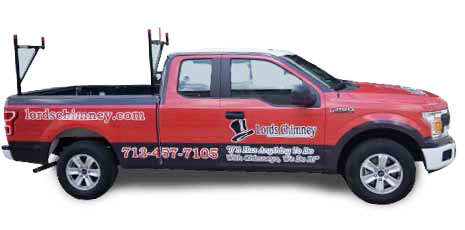Animals love chimneys; whether it is raccoons or squirrels, roof rats or birds, many different types of animals view chimneys as a safe, protected space to nest, have their young, or hide from predators. Unfortunately, animal entry can cause serious damage to your chimney, as well as put you and your family at risk.
When an animal gets into your chimney, it can be harmful to them and damaging to your chimney. However, it is possible to avoid animal entry with regular chimney maintenance and a good chimney cap.
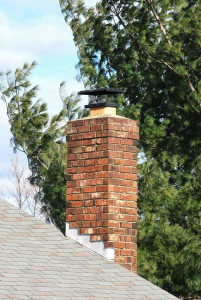 How animals get in
How animals get in
The most common cause of animal entry into chimneys is a missing or damaged chimney cap. The chimney cap sits at the top of the flue, covering and protecting the flue from animals and the elements. While the solid metal top of the chimney cap prevents water from getting in, the mesh or wire sides serve two purposes: letting smoke out and preventing animals from getting in.
If they chimney cap is damaged in any way, it may be easier for animals to get in. Small holes, dents, damaged mesh, or missing screws might seem too minor, but even these small issues can leave spaces for animal entry. Birds and small mammals often only need a few inches of space to wiggle through, while raccoons have been known to claw or bite weak areas of chimney caps to create larger holes.
How animals damage your chimney
Even a tiny animal can create a big problem in your chimney. Below are some of the ways that animals can damage your chimney.
- Chimney cap: Animals can create or worsen damage to the chimney cap. This can leave your chimney susceptible to water and debris getting in – as well as more animals in the future.
- Flue liner: Sharp claws and talons can scratch and chip the delicate flue liner. Areas of damage in the liner can expose the surrounding building materials to heat or gasses from the chimney and may require your chimney to be relined.
- Debris: Animals rarely come into your chimney empty handed. Dry nesting materials in the chimney can ignite if the fireplace is used, putting you at greater risk for chimney fire. Likewise, many wild animals also carry bacteria, bugs, and other diseases.
Keeping animals out
The best way to keep animals out of your chimney is by having a quality, well-fitted and correctly installed chimney cap. A quality chimney cap protects the area of your chimney that is most susceptible to animal entry, as well as keeps water and debris from entering your chimney. Regular chimney inspections can also be used to spot damage to the chimney cap or other areas of the chimney before animals can get in.
At Lords Chimney, we are the animal removal experts; not only can we safely get the animals out, but we can also prevent them from coming back with a quality chimney cap. Contact us today to learn more about how the chimney cap protects your fireplace system from animal entry.
While the bricks and mortar of your chimney is designed to withstand the elements, there is one force that can cause serious damage – water. Moisture can wreak havoc throughout your chimney system, causing leaks, rusty parts, and masonry deterioration. However, the presence of moisture can also show itself in unique ways, including chimney discoloration or staining. The following guide can help you identify the kind and source of your chimney staining – as well as how you can keep it from coming back in the future.

Red or brown stains
If you have a prefabricated or factory built chimney, red or brown stains on the chimney chase are often the result of rusting. Long-term exposure to moisture – especially from puddles of standing water – can cause the galvanized metal found in many chimney chase covers to deteriorate and rust. The rusting chase top then causes dark red, brown, or orange staining to appear on the sides of the chimney. Rusted chase covers should be replaced with sturdier metals such as stainless steel or copper to prevent rusting from occurring again.
White stains
Crystalline or powdery white stains or discoloration are caused by a phenomenon known as efflorescence. Efflorescence occurs when water trapped in the masonry evaporates, leaving behind a concentration of white mineral salt.
Efflorescence is more commonly seen in areas where ground or rain water has a high salt content. Water from hoses, sprinklers, or rain can all cause efflorescence to occur. However, interior efflorescence may indicate that you have a leaky chimney; only small amounts of moisture are required to leave behind the mineral white chalky salt after evaporation.
Dark green stains
Dark green stains or discoloration is typically caused by the growth of algae on masonry. In order for this type of discoloration to occur, water must continually flow or pool over one area of the chimney structure. This type of long term exposure to moisture can foster an environment for algae growth – as well as mold or mildew – on the chimney.
What about inside?
While water can wreak havoc on your masonry outside, it can cause an equal number of problems indoors as well. One of the most common signs of a chimney leak is the presence of water in the flue, firebox, or on surrounding walls or ceilings. However, it can be difficult to tell the difference between a roof leak and a leaky chimney; because of this, you may want to have a certified chimney sweep have a look at the chimney before you or your insurance company pay to have the roof inspected and repaired.
Staining on your masonry could indicate that your chimney has a water leak. For more information on identifying chimney stains or to schedule a chimney inspection, contact Lords Chimney today!
With spring just around the corner, many animals will begin looking for places to build their nests and lay their eggs. Unfortunately, some birds may view your chimney as the perfect nesting place for their young ones.
One animal that is well known for trying to nest in chimneys is the chimney swift – it’s even in their name! While it may not seem like a major problem, a chimney swift nest in your chimney can be a serious nuisance as they are a protected species that cannot be moved. The following information about chimney swifts can help homeowners recognize these birds, understand how they get into chimneys, and find ways to keep them out.
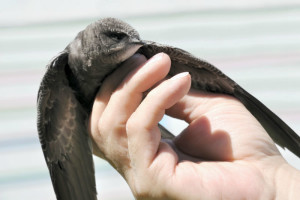
What are chimney swifts?
Chimney swifts are very small grey and brown birds with cigar shaped bodies and wide, short bills. Chimney swifts are easily identified by their distinctive chirp as well as their sharp, jerky movements when flying. While chimney swifts spend their non-breeding winters in South America, they migrate back to North America for the spring nesting season each year. According to the Cornell Lab of Ornithology , “Their ability to travel over long distances and through a variety of habitats exposes them to a wide range of microorganisms.”
Why chimney swifts love to nest in chimneys
In year’s past, chimney swifts preferred to nest in hollow or dead trees. However, as cities have grown larger and wooded areas are harder to find, chimney swifts have been forced to adapt. In fact, chimney swifts got their name because they often seek out chimneys as their nesting sites.
Chimney swifts most commonly find their way into uncapped chimneys or chimneys with damaged chimney caps. Because they are so small, even the smallest hole in the netting or mesh of a chimney cap can be big enough for a tiny swift to fit through. Because they are a migratory bird that will return year after year to the same nesting site, it is important to have your chimney repaired as soon as the swifts have left to avoid their return.
I have swifts in my chimney – now what?
When you first discover an animal has nested in your chimney, the natural reaction is to want them removed as soon as possible. Unfortunately, chimney swifts are a protected species whose nests cannot be moved.
Chimney swifts, along with a variety of other migratory birds, are protected by the Federal Migratory Bird Treaty Act. This law bans the removal or destruction of any migratory bird nests that have eggs or hatchlings. Thankfully for homeowners, chimney swifts have a short nesting cycle; in the span of about six weeks, the birds will nest, lay and hatch eggs, and have their hatchlings leave the nest.
While chimney swifts are a nuisance, they are a protected species that cannot be removed once they have built their nests. Because of this, they best way to keep them out is by preventative measures like spark arrestors or netting. For more information on chimney swifts and how to keep them out of your chimney this year, contact Lords Chimney today!
Having a chimney fire is a scary experience. No matter how large or small it was, many homeowners are left wondering about the state of their fireplace: when can I use my fireplace again? Does my entire chimney need to be torn down? Is it safe for my family to remain in our house?
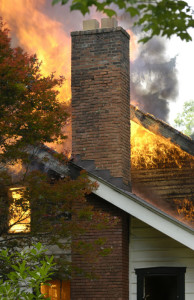
The first thing you should do after a chimney fire is call a certified chimney sweep. A certified sweep is best equipped to evaluate the damage caused by a chimney fire as well as recommend the necessary repairs that may need to be made.
What are the signs of a chimney fire?
While flames spewing from the top of the flue are a guaranteed sign of a large chimney fire, smaller chimney fires often go unnoticed. This is because the signs of a chimney fire can sometimes be hard to distinguish from the results of a normal fire. Below are some signs that you may have experienced a chimney fire:
- Puffy creosote
- Warping of the metal of the damper, smoke chamber connector pipe, or factory built chimney
- Flue tiles that are collapsed, cracked, or have large chunks missing
- Distorted or discolored chimney cap
- Smoke or heat damage to areas of the roof around the chimney
- Pieces of creosote on the roof
- Cracks or damage to exterior masonry
- Evidence of smoke escaping through mortar joints of masonry or tile liners
How do I make repairs after a chimney fire?
All chimney fires are unique; because of this, there is not one simple solution as to what repairs will need to be made after a chimney fire. Although a certified chimney sweep will be able to make the exact recommendations based on the condition of your home’s chimney, below are some of the most common repairs needed after a chimney fire.
How can I prevent another chimney fire?
The best way to prevent chimney fires is by having your chimney regularly swept. Because highly flammable creosote is often to blame for chimney fires, having it regularly removed can minimize the rest. The Chimney Safety Institute of America recommends annual chimney sweepings for the majority of homes with fireplaces.
While creosote is a naturally occurring byproduct of fuel burning fires, there are a number of ways to prevent it from building up in your chimney. When it comes to choosing firewood, only seasoned firewood should be used. Other woods, including soft woods like pines or firs, can create more creosote when burned. Green or freshly cut wood with high moisture content can also cause excessive creosote buildup.
Living with a chimney fire – as well as trying to figure out what to do when it is over – can be a scary and stressful experience. If you believe your home has had a chimney fire, contact Lords Chimney today to learn more about chimney fires and to schedule an appointment to have your chimney evaluated.
Homeowners are always striving to make sure that their homes are in the best shape. This not only includes the way they function, but also the way they look. Chimneys are one part that always seems to get the unappealing visual effects, but now there are ways to fix that. Parging is a mixture that will give your masonry wall a fresh look. To learn more call the technicians at Lords Chimney today!
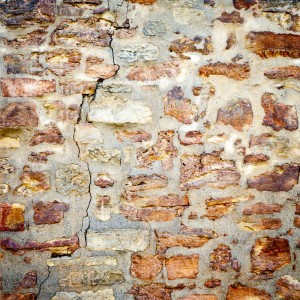
What is parging?
Parging can be used on almost any indoor or outdoor structure made of concrete, brick, or stone. The mix contains water, lime, and a blend of cement and can be made at your home. However, it is important that every ingredient is measured properly, so if you prefer you can buy a pack at the hardware store and just add water. It is also important to make sure that you are adding just the right amount of water. Mix with too much water can crack, but mix that is short on water may not stick.
Parging is the trick to cover anything that you may not want people to see such as cracks, holes, or water damage, all without costing a fortune. Parging is also sometimes used for sealing off small air leaks, which can overtime improve your electric bill. If you are buying a property you should make sure that none of these errors have been previously covered by parging without being properly fixed. This could cost you more money later if something were to go wrong.
How do you apply parging?
You can apply parging on your own, however it is always recommended that you have a professional do your chimney work. You will need a masonry trowel to apply the mix so you can be sure to get thin layers and reduce the chance of it being too heavy. Also, make sure the walls you are coating are wet so that the mix sticks properly. Parging can be applied to have a smooth look, or a textured look. To get the smooth look keep your trowel wet and apply a second coat after the first has time to dry completely. If you would like, parging can be painted to match other walls.
Is your chimney leaking? We’re willing to bet that if you’ve found this blog post, you may be trying to find an answer to why there are water stains on the ceilings or walls around your chimney or why you smell mold or hear a drip-drip-drip sound coming from your chimney. A chimney leak can be caused by any number of things, but here in Houston, Lords Chimney’s certified technicians have seen it all; from our many years of leak resolution, we now know that most chimney leaks can be attributed to one of the following four issues:

All chimneys—whether they’re brick, stone, or prefab—require some type of maintenance to keep water out of them. We’re happy to advise you about which waterproofing method(s) are best for you and your home.
1. Gapping or Rusted Flashing: Flashing is the metal band that is woven around the base of your chimney where it meets your roof. In most cases it is partially embedded in your roof’s shingles—so that new flashing is often installed at the same time as a new roof. This junction point is a vulnerable one, hence the flashing is installed to give it added armor from potential leaks. However, flashing is notorious for gapping or rusting over time, especially if caulk has come loose or if the flashing was installed improperly. If we determine that faulty flashing is the cause of your leak, Lords Chimney can either repair your existing flashing or custom fit new flashing onto your chimney.
2. Inadequate Protection Up Top: A chimney without a chimney cap or a top-sealing damper is not unlike a house without a roof. In other words you’ve got a recipe for disaster, as your chimney is inviting water into your home. A chimney cap or top-sealing damper will not only keep water out but also keep animals and debris out, keep sparks in, and in the case of a chimney damper, save you money on energy bills.
3. Cracked Crown: At the very top of your chimney sits your chimney’s crown, which seals your chimney from the chimney’s flu(es) to the edge of the chimney. According to the CSIA, “The crown should provide a downward slope that will direct the water from the flue to the edge of the crown. The overhanging drip edge, by directing the run-off from the crown away from the chimney, helps prevent erosion of the brick and mortar in the chimney’s vertical surfaces.” Many chimney crowns are built with an inadequate mortar mix that too soon chips or cracks, allowing water to seep in. In many cases existing crowns can be repaired, though we sometimes determine that a crown needs to be completely rebuilt.
4. Masonry Problems: Surprisingly porous, brick and mortar—if not professionally waterproofed and maintained—can actually act as a sponge to draw water into your chimney. In addition, chimney brick can crack and spall over time, making your chimney more susceptible to leaks. If this is the case, tuckpointing or other repairs may be necessary, along with the application of a waterproofing sealant.
Lords Chimney serves the entire Greater Houston area. Having chimney problems? We hope you will call us first.
 How animals get in
How animals get in
